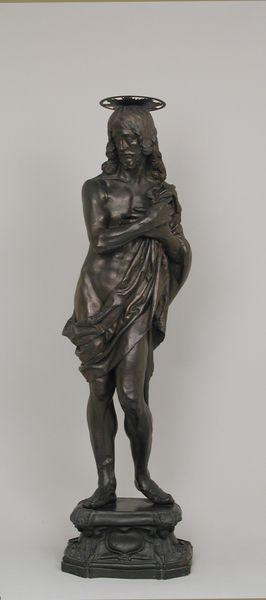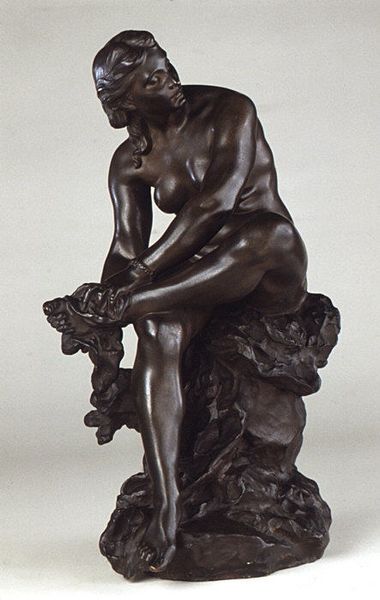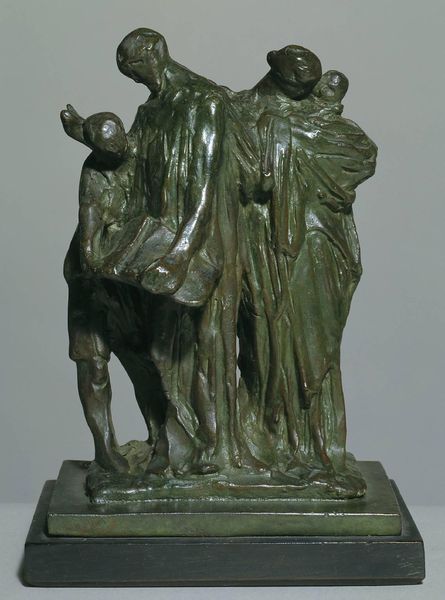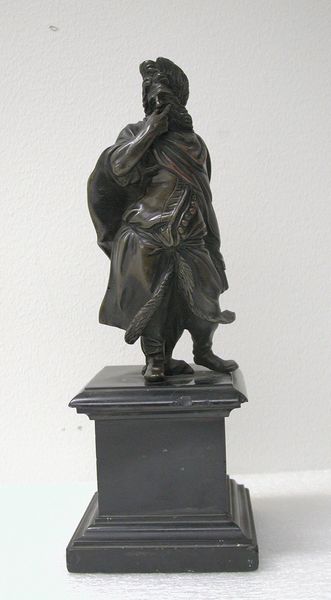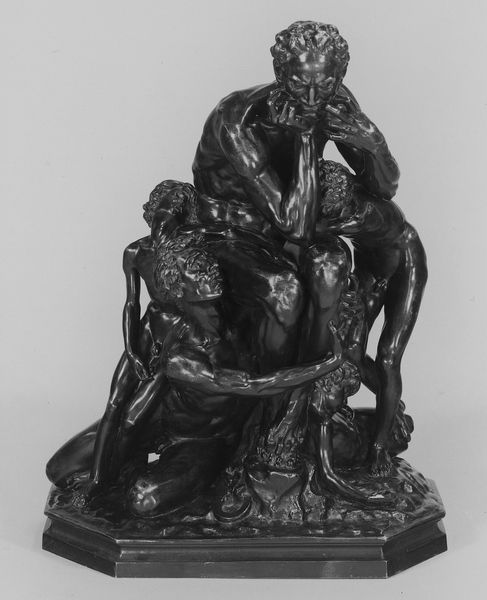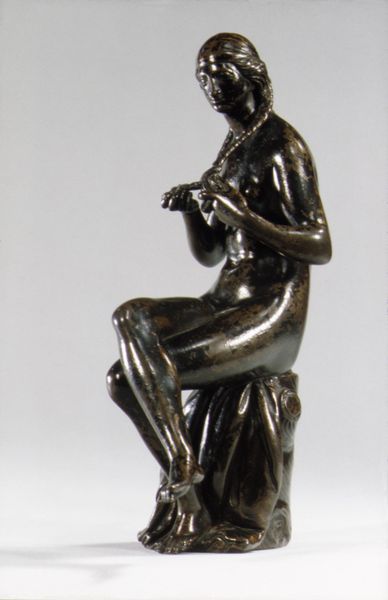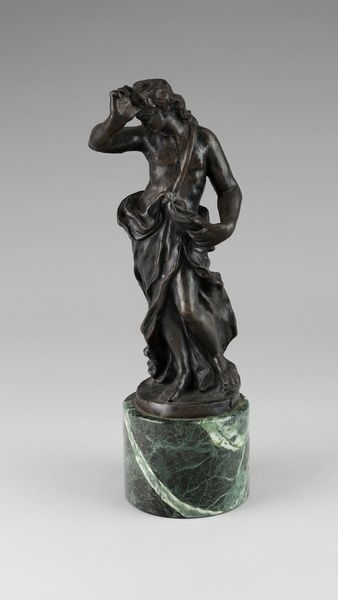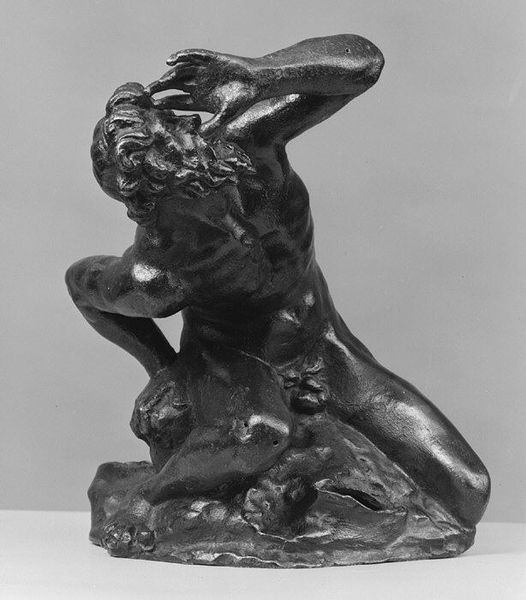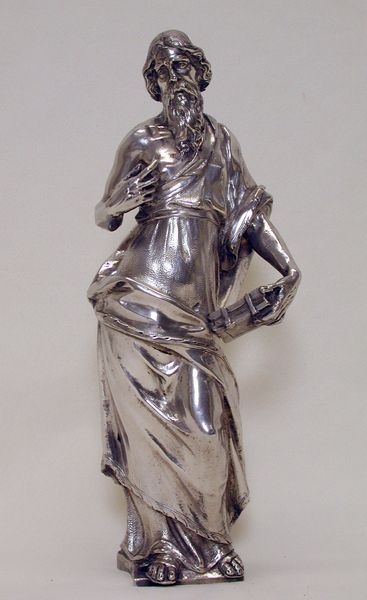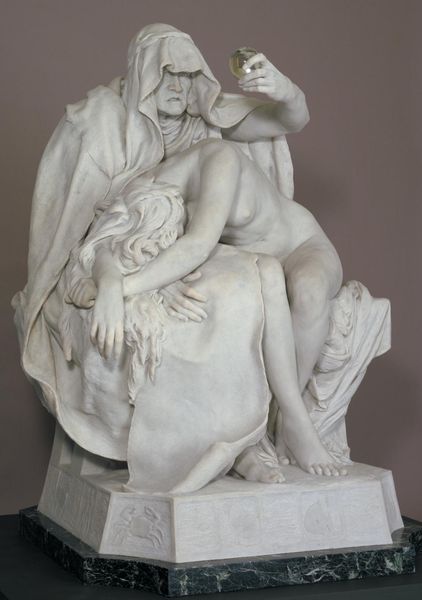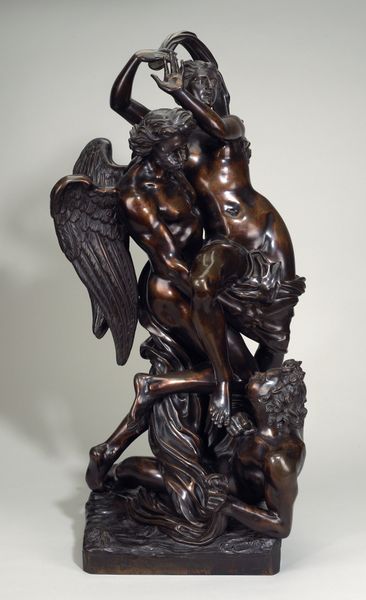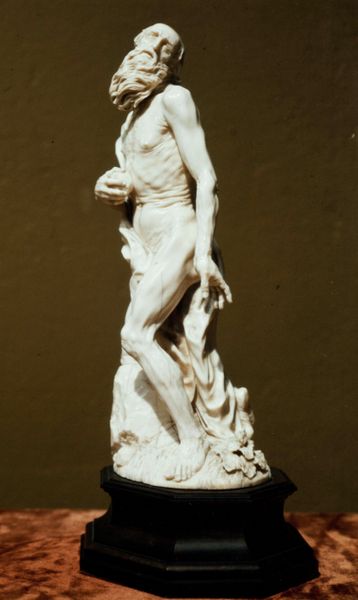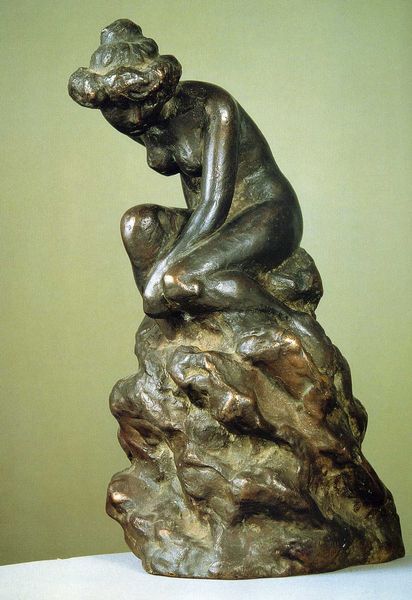
bronze, sculpture
#
baroque
#
stone
#
sculpture
#
bronze
#
sculpture
#
men
#
decorative-art
#
statue
Dimensions: Overall: 6 1/8 x 3 x 2 1/2 in. (15.6 x 7.6 x 6.4 cm)
Copyright: Public Domain
Curator: What strikes me first is the intimate scale, yet commanding presence of this bronze sculpture. Editor: That somber darkness is striking, isn't it? Like a hidden tale waiting to be unveiled. Curator: Exactly. This is Pierre I Legros' "Aesop," dating back to the late 17th century. It depicts the famed fabulist holding a chicken. Editor: Aesop and a chicken... The bronze is cast beautifully. I can really feel the weight and texture. I am curious how a sculptor achieved such realism without modern tools. I like how they didn’t hide the seams of the cast either; instead, those are visible reminders of its process. Curator: The chicken might reference his most famous fable, "The Hen and the Golden Eggs." It represents a cautionary tale against greed, suggesting that seeking instant riches can lead to ruin. But looking at the statue now, one can see several symbolisms. His hand gestures are evocative too. What is he about to do with the chicken? Is it more for survival or storytelling, even exploitation, if you will? Editor: I suppose it all starts from one place: how they sustained themselves! It has a Baroque theatricality to it, this piece does. The statue also reveals the complex labor of bronze casting during that era—the collaboration between artist, foundry workers, and the socio-economic system which makes bronze art. Each part contributing their bit. I mean, Aesop in the Baroque! Isn't that something? Curator: Indeed! A merging of ancient wisdom and dramatic expression. But as with symbols and images, we can derive meaning from several sources and perspectives. A moral story can then transcend centuries of meaning making. Editor: Ultimately, it’s about the choices the artists make. That the sculpture made it to the museum is another choice! But as a final comment, the object reflects the social values of production. And that is worth considering. Curator: Definitely something to contemplate. The artwork stands as a constant, potent invitation to unravel narrative threads and moral structures from past generations.
Comments
No comments
Be the first to comment and join the conversation on the ultimate creative platform.
